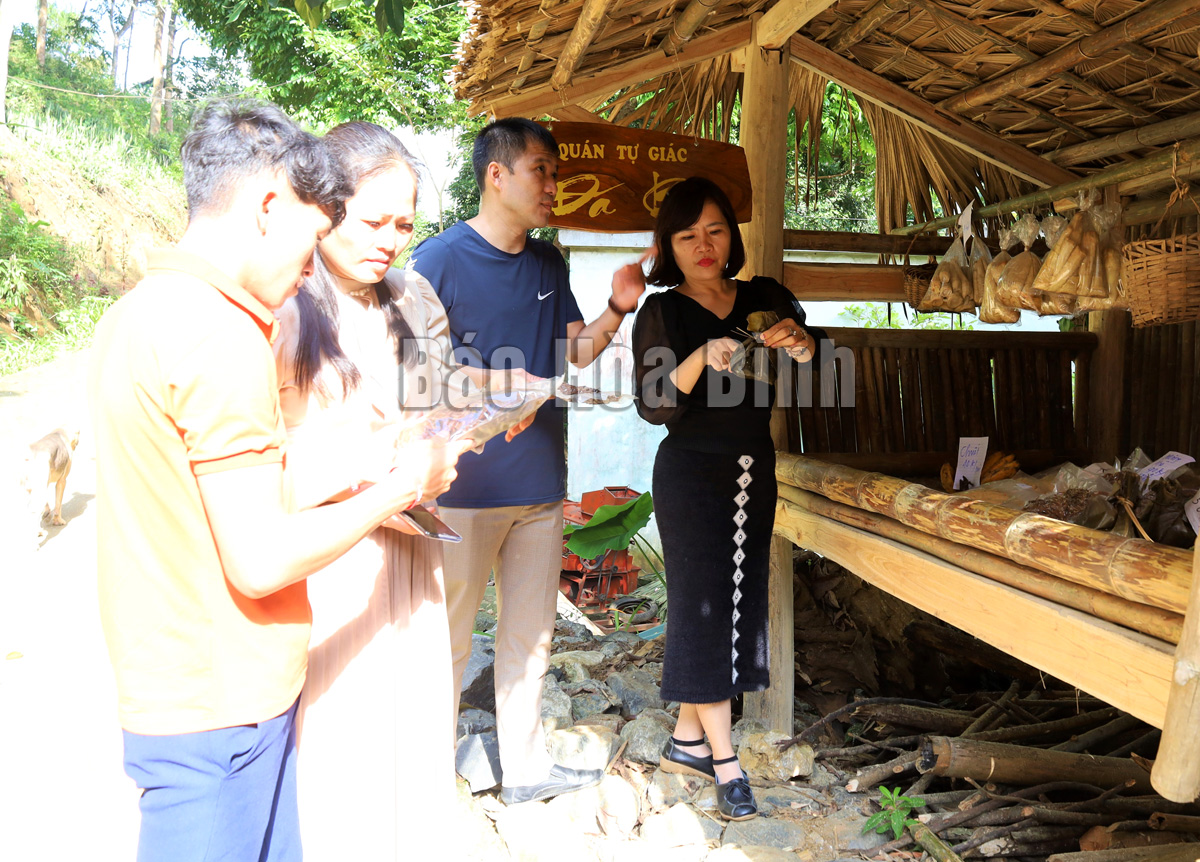



Visitors are experiencing a unique selling form at a self- consciousness shop at Da Bia tourism site, Tien Phong commune (Da Bac).
To get to Da Bia, you can follow the road route from Hoa Binh city through Da Bac town, then you explore a long way through many villages. Many people choose the second way, getting from Thung Nai wharf (Cao Phong), which takes about the same time, however, visitors have more interesting experiences when sailing, admiring the scenery of the picturesque within the romantic area of Hoa Binh lake before going ashore and starting the journey to visit the village.
Life in the village is very peaceful. The houses of the families are all the traditional stilt houses of Muong ethnic people, with a view overlooking the lake, which is very airy and cool. In recent years, realizing the potential of community tourism, in order to promote the goal of building the models of livelihood improvement, the project implemented by the Australian NGO (AOP) has provided the financial support and guidance, helping the people in the village do the community tourism. The renovation of households' houses still retains the architecture of the stilt houses with many utilities. Homestays have been formed in the villages to meet the needs of eating, sleeping and resting, connecting and providing many experience services to visitors at the same time.
In many customs and practices that Da Bia people keep, the "self-consciousness shop” is a unique culture of Muong Ao Ta people. With a unique selling form with no seller has aroused curiosity and leaves a strong impression on visitors. The people here say that this type has existed for a long time, and it has been becoming the pride and proof of the spirit of self- consciousness and the community cohesion. The "self- consciousness shops” often sell agricultural products such as sticky corn, bananas, sweet potatoes, bamboo shoots, wood ear, wild vegetables... In each basket, there is a price list so that anyone passing by with a need can take it home and voluntarily put money into the basket.
With more than 40 households, the life of Muong Ao Ta ethnic group in Da Bia has changed a lot since there is an establishment of community tourism area. In 2019, Da Bia community tourism area was honored to receive the ASEAN Award for community tourism. Thereby, it has been affirming the quality, the professionalism and the attractiveness of the tourism site. At the same time, it helps to promote and introduce the local images, the people and the culture to domestic and international friends.
Da Bia used to welcome many groups of foreign and domestic tourists, most of whom were still groups of friends and family. Along with the landscape of forests, mountains, rivers, the environment and the fresh climate, the beautiful customs and habits, the friendly and civilized behavior of the people in the village are high appreciated by tourists. Coming here, besides the feeling of being conquered by the nature, visitors can experience the cultural space and the daily life of the indigenous people. The can enjoy the cuisine of Muong Ao Ta people, which are mainly taken from self-sufficient sources such as jogging chicken, free-strolling pigs, fish on Da river, the steamed vegetables... which are processed with their own unique and bold mouth-watering flavors. Staying at the community guesthouses, walking or cycling to visit the village, learning about the traditions of Muong people within the lake area, participating in fish catching, and experiencing the package of Oc cakes, rowing, kayak rowing… will be very attractive to tourists.